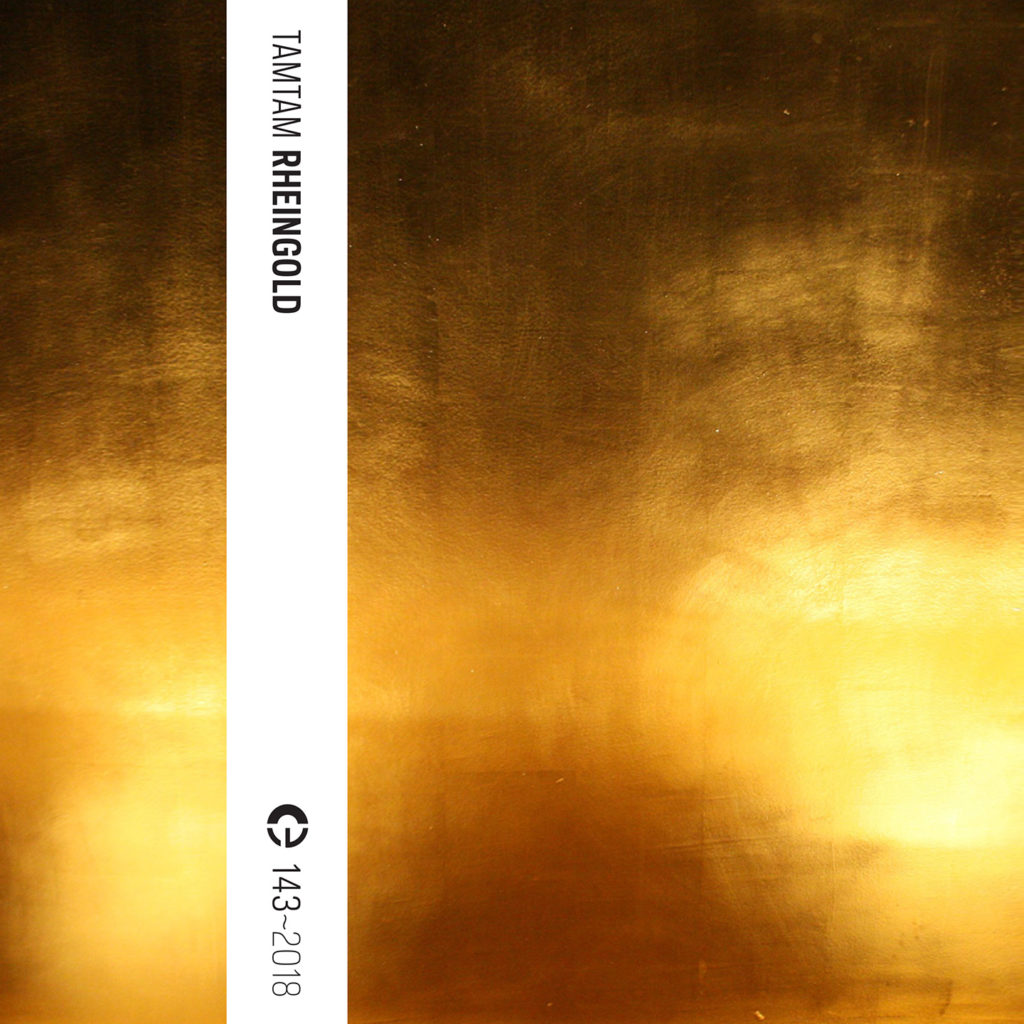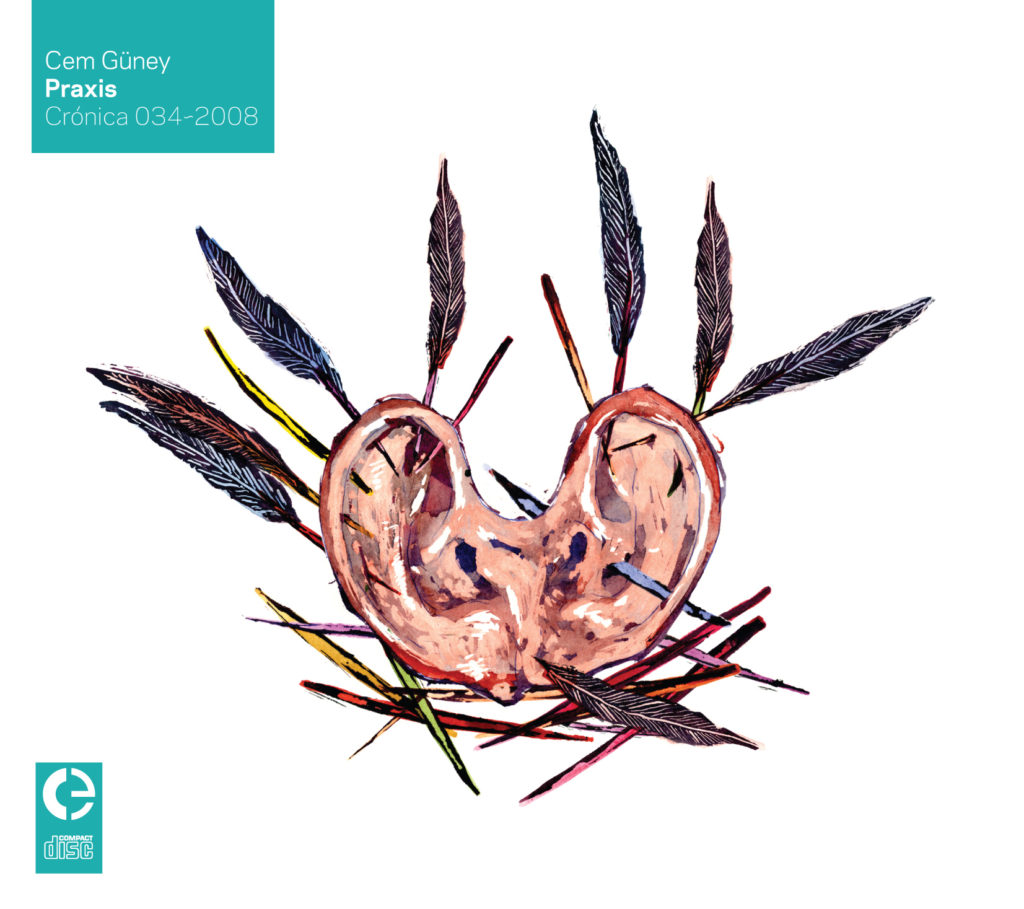
Such is the stature of ‘Des Ring Der Nibelungen’ that even the mildest utterance of Rheingold feels somewhat brazen, a laden-thrust to the overbearing musical resonance that word conjures: yet Tamtam’s work is entirely antithetical to the Wagner opera with which it shares a moniker. Based upon hydrophone recordings of the Rhine River, the listener is proffered an enchanting yet infinitely subtle world, a shifting, creaking mass that is amorphous by design. The source material serves both as a conceptual bed and compositional framework – the entire piece feels like a river, unfolding in waves of sound that build without drama, marking the mind with only the faintest trace upon their inevitable retreat. It is a highly evocative, highly visual work, and one that benefits from volume – under the right listening conditions you can almost imagine your body prostrated along the rivers bank, engulfed in the monotonous lap of water upon the bow of a boat.
This is in no sense a purist’s approach to field-recording, however. Whilst the recordings lack any overt processing, the inclusion of gong and electric bass accent and oppose the natural rhythms and timbres on offer, underscoring the soft crescendo’s that serve as the piece’s only real structural unity. The recordings are treated with a notable reverence, and whilst scrapes and drones of the instrumentation offer a broader and more defined musical palette, their performance is always secondary to the underlying qualities of the river, the repetitive, emergent motion of water.
As an album, Rheingold is perhaps boring – assuming we can for a moment reclaim that word, to remove its negative connotation and presume that, as with the work of La Monte Young, it points to an active capacity to exist beyond the border of interest or sense, a space of higher, transcendental engagement. Indeed, Tamtam’s work is reminiscent of Young’s, even as it invokes wildly different sonic materials – it carries the same focus on the microscopic, the same approach to temporality that forces its listener to abandon any comprehension of the piece as a whole. Every moment is lavishly ill-defined, a holistic experience that cannot be broken down into meaningful, free-standing parts. And whilst terms such as ‘organic’ or ‘sublime’ are used so frequently as to render them near-impotent, Tamtam’s work captures the vitality, the living presence of a physical location in a way few more straight-forward field-recordings can master. The sparse and textural instrumentation is embedded to completely into the Rheine that what emerges is a near seamless divination of composer and source, performer and site.
In addition to the main piece, the album offers three remixes, or perhaps, revisions, of the material. The first of these, Eosin’s ‘Erda’, eschews the dynamic, undulating life of its source material in favour of far more clinical, cold imagining that, if it lacks the inherent beauty of its source, is efficient and powerful none the less. Static to a fault, Eosin’s version adds layers of glitch and percussion that, rather than advancing the composition, seem to lock the listener into a not altogether pleasant funk, a faintly industrial soundscape that brings to mind the more textural work of Z’ev. Maile Corbert offers a restrained interpretation with ‘TamTam Tuning’, a work that seems at first so close to the original that it could almost be the same piece.
As it progresses, however, it becomes clear that there is some unusual, pronounced processing at play – some sort of phase or frequency alterations that steer the work in a new direction, without ever forcing its own footprint too firmly upon it. Embracing a sense of disorientation beyond the cyclical, repeating waves of its predecessor, Corbert adds a certain futuristic bent, as if the Rhine now sits as the backdrop to a Tarkovsky film, a somewhat alien, if no less organic, being. Finally, ‘Einhundertvierundzwanzig’ is the albums only remix proper, invoking a markedly different aesthetic and intent. Electronic percussion, spectral processing, and the use of samples, make for a buzzy, digital affair that somewhat squanders the source material – whilst not unpleasant, it is hard to see how his adds anything to the endeavour, with a final movement that feels utterly incongruous to the project as a whole.
This slight quibble aside, Rheingold is a wonderful, immersive listen, whose reverence to its source is such that it inhabits a uniquely unspectacular sound world, a beautiful, discreet, and texturally-rich tapestry that perfectly encapsulates and explores, in its own quiet fashion, the inherent life of the river from which it draws inspiration. Daniel Alexander Hignell-Tully
via Toneshift









